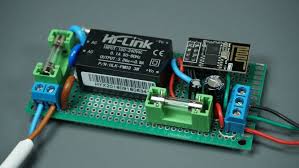
How to Design a Safe Power Circuit for IoT
With the increasing popularity of Internet of Things (IoT) devices, the need for safe and reliable power circuits has become more important than ever. Designing a power circuit for IoT involves careful consideration of various factors to ensure that the device operates efficiently and without any risks of damage or malfunction due to power issues. In this article, we will discuss some key considerations for designing a safe power circuit for IoT applications.
1. Voltage Regulation
One of the most important aspects of designing a power circuit for IoT is voltage regulation. IoT devices often require a stable and reliable power supply to function properly. Voltage fluctuations can cause damage to sensitive components and affect the overall performance of the device. Therefore, it is crucial to use voltage regulators to maintain a consistent voltage level within the acceptable range specified by the device manufacturer.
There are various types of voltage regulators available, such as linear regulators, switching regulators, and buck-boost regulators. The choice of regulator depends on factors such as the input voltage range, output voltage level, efficiency, and cost.
2. Overcurrent Protection
Another important consideration when designing a power circuit for IoT is overcurrent protection. Overcurrent can occur due to a short circuit, component failure, or power surges, which can potentially damage the device or pose a safety hazard. To prevent overcurrent, it is essential to incorporate current-limiting devices such as fuses, circuit breakers, or overcurrent protection ICs in the power circuit.
These devices help to limit the amount of current flowing through the circuit and protect the device from damage. It is important to select the appropriate current rating for the overcurrent protection device based on the maximum current consumption of the IoT device.
3. ESD Protection
Electrostatic discharge (ESD) can cause damage to electronic components in IoT devices, especially during installation, maintenance, or handling. To protect the device from ESD damage, it is essential to incorporate ESD protection devices such as transient voltage suppressors (TVS), diodes, or ESD protection ICs in the power circuit.
These devices help to shunt the high-voltage spikes caused by ESD events away from the sensitive components, ensuring the reliability and longevity of the device. It is important to place the ESD protection devices close to the input power connector to minimize the risk of ESD damage.
4. Power Supply Filtering
Power supply filtering is essential in designing a safe power circuit for IoT to ensure a clean and stable power supply. Filtering helps to remove noise and interference from the power source, which can affect the performance and reliability of the device. Common power supply filtering components include capacitors, inductors, and resistors.
It is important to carefully select the right combination of filtering components based on the frequency and amplitude of the noise present in the power source. Proper filtering can improve the signal integrity and reduce the risk of malfunctions or errors in the IoT device.
5. Thermal Management
Thermal management is crucial in designing a safe power circuit for IoT to prevent overheating and damage to the device. IoT devices can generate heat during operation, especially when powered by high currents or operating in harsh environmental conditions. Proper thermal management techniques such as heat sinks, thermal pads, and ventilation can help dissipate heat and maintain the device’s temperature within safe limits.
It is important to consider the thermal characteristics of the components used in the power circuit and ensure proper heat dissipation to prevent thermal runaway or component failure. Regular monitoring of the device’s temperature and implementing adequate cooling solutions can help prevent overheating and ensure the long-term reliability of the IoT device.
Conclusion
Designing a safe power circuit for IoT involves careful consideration of various factors such as voltage regulation, overcurrent protection, ESD protection, power supply filtering, and thermal management. By implementing these key considerations in the power circuit design, you can ensure that your IoT device operates efficiently and reliably without any risks of damage or malfunction due to power issues.
Remember to consult with experienced engineers and follow best practices in power circuit design to achieve optimal performance and safety for your IoT applications.
Was this helpful?
0 / 0